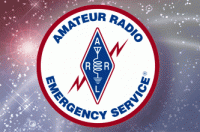|
Welcome,
Guest
|
TOPIC:
K1ICE's RMS Express/Winmor/Signal Link Experience 10 years 7 months ago #289
|
www.arrl.org/ares-el?issue=2013-09-18
Rick - K1ICE shares: I wrote the following in this column in the June 2013 issue: "I recently loaded the software for RMS Express/WINMOR and managed to send an e-mail message to myself via the Telnet mode, and have moved on to adjusting the sound card and software for transmitting e-mail messages over the air on the HF bands. WINMOR is a sound card mode that is a less expensive alternative to the hard multi-mode data controllers while admittedly sacrificing some efficiencies. The RMS Express/WINMOR combo sees a lot of use in disaster response communications planning and operations." I wanted to follow up on my experience: After some initial failures in connecting to a Winlink hub to send my drafted Winlink e-mail message, I bought a superb little piece of equipment - a SignaLink USB digital interface that also incorporates a high-quality sound card, on the basis of a recommendation I had read somewhere. The on-board sound card greatly simplifies the processing of the signals back and forth between the laptop computer and radio, in my case, an ICOM IC-7000. An inspired part of the overall RMS Express/WINMOR suite is the incorporation of a propagation utility, ITS HF (the ITS is the Institute for Telecommunications Sciences of the NTIA), for help in choosing the best hub based on best path for sending your messages. It's all a bit intimidating at first, but the thrill of connecting to Bud Thompson's, N0IA, system on forty meters here in Florida and uploading my first Winlink messages was not to be denied. It worked very well, efficiently sending my message to my own regular e-mail account within seconds. The advantage of a global e-mail network independent of local Internet infrastructure is without a doubt a huge potential asset in major disaster response communications planning and operations. Just a tip or two: To set up the SignaLink unit for your specific radio and application, you need to open the case and push some jumper wires into some small sockets. As the original appliance operator, it made me nervous to have to perform this set-up procedure with my 60-year old eyes and hand/finger coordination, but I had no problem. Just take much time and concentration to do it right the first time: You don't want to bend those itsy-bitsy wires too much, or you could end up breaking them off in the sockets with no hope of retrieving the stubs. Just be careful, that's all. And lastly, to run CW with the unit, the wires have to be reconfigured with different sockets. Don't bother futzing with it. Do what I do: have another unit pre-configured for Morse code sending, and simply swap units as necessary. For CW sending, I use my tried and true Rigblaster Plug and Play, another great little product: It plugs into your USB port and into the radio's key jack. It works like a champ. I use the CW Type software with it. I received a letter from a reader who was disheartened about my apparent lack of attention to the NBEMS suite, and in response, I downloaded the primary program files and will experiment with them as my next project. I'll report my experience here in a future issue. There was a good two-page article on NBEMS in this month's QST - check it out. - K1CE |
|
Please Log in or Create an account to join the conversation.
Last edit: by WA1SFH.
|
Time to create page: 0.147 seconds
